Finding the right hypoallergenic breed for dog lovers with allergies can seem impossible. You yearn for the companionship and unconditional love only a canine friend can provide. Yet, the runny nose, itchy eyes, and sneezing that come with many furry friends make pet ownership challenging. This dilemma often leaves allergy sufferers heartbroken, forced to admire dogs from a distance.
But for those longing for a hypoallergenic dog breed that won’t aggravate allergies, there is hope. Italian Greyhounds may be the perfect solution. These refined yet playful pups have minimal shedding and lower dander production, making them less likely to trigger allergic reactions.
Before welcoming an Italian Greyhound into your home, it’s crucial to understand what makes them potentially hypoallergenic. This article will explore the ins and outs of Italian Greyhounds and allergies, from their coat qualities to maintaining an allergy-friendly environment. Discover why these graceful dogs are popular among allergy sufferers seeking furry companionship without sneezing and wheezing.
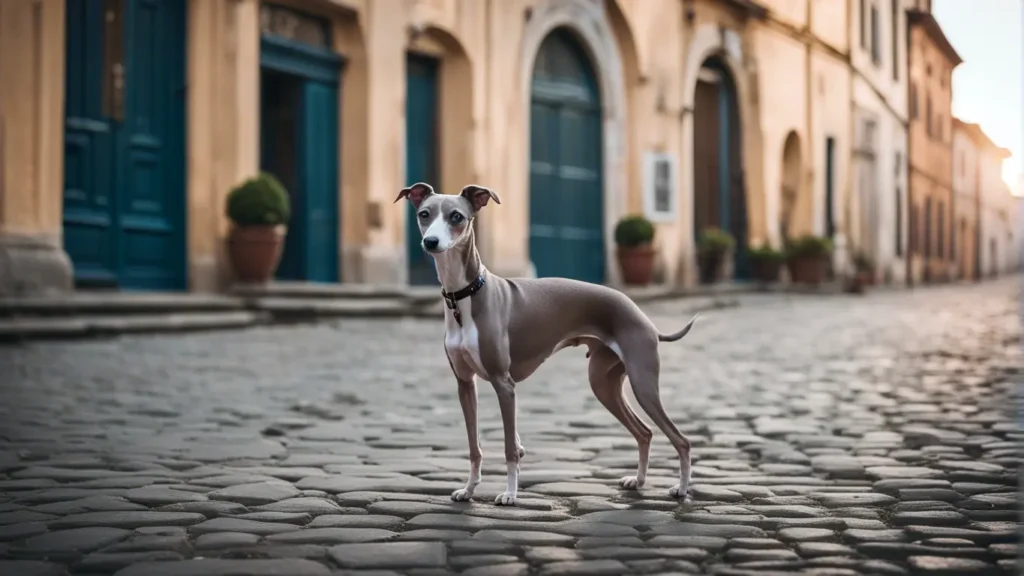
Table of Contents
- 1 An Introduction to the Italian Greyhound Breed
- 2 Why Italian Greyhounds Are Often Recommended for Allergy Sufferers
- 3 Factoring in Potential Allergen Triggers
- 4 Unique Traits of the Italian Greyhound Coat
- 5 Grooming Needs for Allergy Sufferers
- 6 Creating an Allergy-Friendly Home Environment
- 7 Choosing an Italian Greyhound Breeder or Rescue
- 8 Bringing Home Your Italian Greyhound
- 9 Caring for an Italian Greyhound’s Overall Health
- 10 Dealing with Allergy flare-ups
- 11 Considering Other “Low Allergen” Dog Breeds
- 12 The Joys of Italian Greyhound Companionship
- 13 Related posts:
- 14 Italian Greyhound: The Ultimate Breed Guide
- 15 Understanding the Gentle and Affectionate Italian Greyhound Temperament
- 16 The Ultimate Guide to Adopting an Italian Greyhound Puppy
An Introduction to the Italian Greyhound Breed
Let’s begin by learning the basics of the elegant Italian Greyhound breed. These petite pups carry themselves with dignity while possessing a fun-loving spirit. Here’s a quick overview of their history, appearance, and personality:
Ancient History
- Originates from Mediterranean regions, dating back to ancient Egypt around 2000 to 3000 BC.
- Prized by nobility in Greece, Rome, and other European areas throughout history.
- The name derives from similarities to regular greyhounds but smaller stature.
Refined Appearance
- Small, slender build, weighing between 7-14 lbs fully grown.
- Short, shiny coat in fawn, cream, slate grey, and black colors.
- Long, narrow head with alert expression. Whip-like tail carriage upright.
Lively Personality
- Intelligent, gentle, sensitive dogs that bond closely with their owner.
- Affectionate and thrive on human companionship.
- Energetic and speedy. Excel at racing, agility, and coursing.
- Can be shy around strangers but very loyal once attached.
- Require consistent training and early socialization.
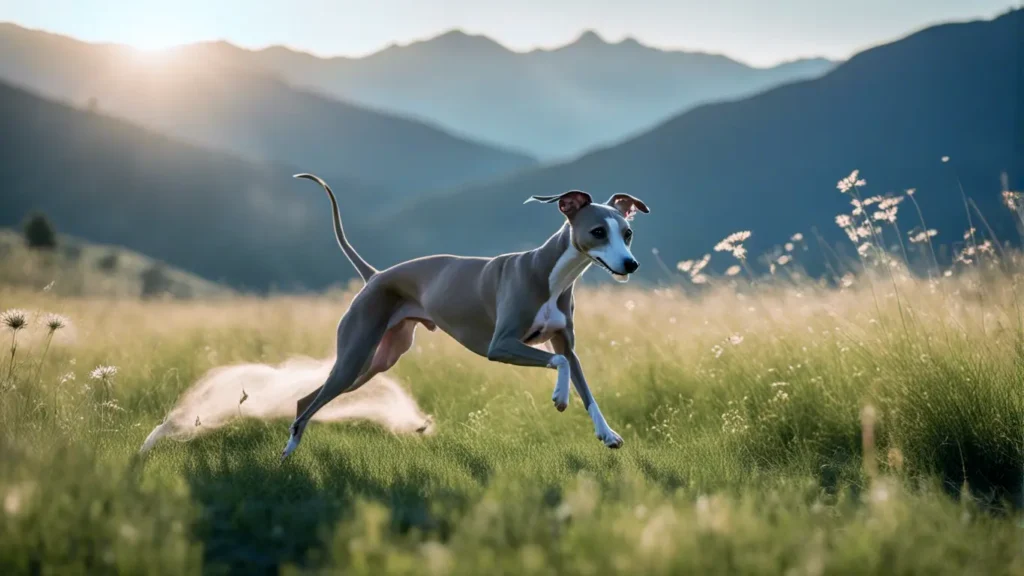
Now that you’re acquainted with the basics of this ancient companion breed let’s explore what makes them potentially suitable for allergy sufferers.
Why Italian Greyhounds Are Often Recommended for Allergy Sufferers
Italian Greyhounds offer new hope for those sensitive to pet allergens like dander. Their unique traits make them less likely to trigger uncomfortable allergy symptoms in many people. Here’s an overview of why this breed is often recommended for allergy sufferers:
Minimal Shedding
Allergy sufferers rejoice – Italian Greyhounds hardly shed! Their short, sleek coat means very little hair is left behind on furniture, carpets, or clothing. Less shedding equals less dander and allergens circulating your home.
Low Dander Production
In addition to minimal shedding, Italian Greyhounds produce less dander than many breeds. Dander, microscopic skin flakes shed by dogs, is a hugely common allergen for pet owners. But with an Italian Greyhound, their low dander production helps prevent allergic reactions.
Less Saliva & Urine Allergens
Some individuals react to allergens found in dog saliva or urine. Italian Greyhounds tend to lick and urinate less than other breeds. This reduction in saliva and urine means fewer potential allergic compounds.
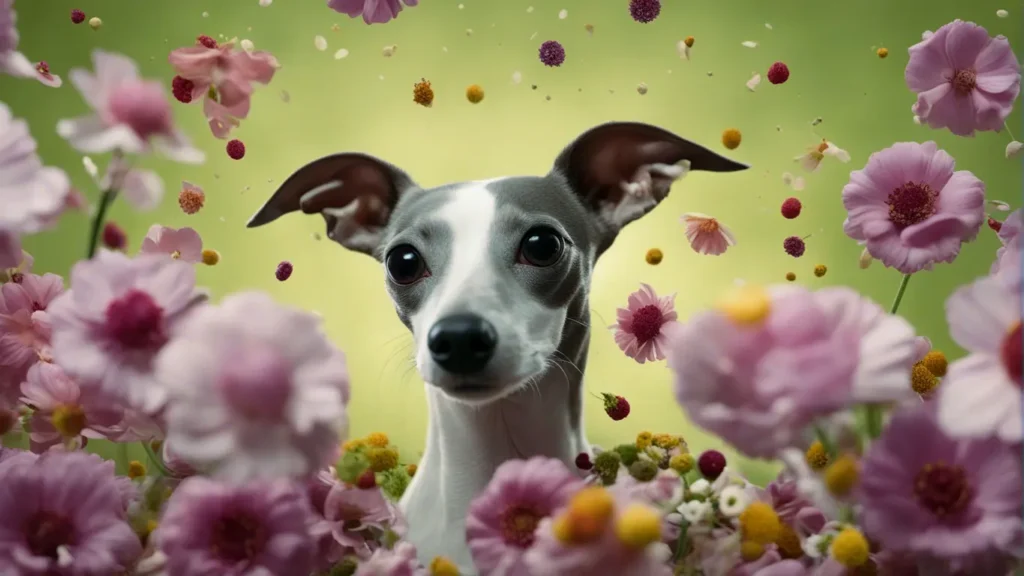
Bathe Easily
Their diminutive size and smooth coat make Italian Greyhounds easier to bathe regularly than larger or long-haired breeds. Frequent bathing removes allergens like pollen, dust, and dander clinging to their coat.
Leave No Odor
Pungent “doggy odor” comes from skin oils, urine, and accumulated dirt in their coat. But Italian Greyhounds’ light musk leaves little lingering aroma. Less odor equals fewer allergic compounds circulating in the air.
All these traits make Italian Greyhounds less reactive for allergy sufferers. But it’s still essential to note that no dog is 100% non-allergenic. Any breed can cause reactions in individuals, depending on specific sensitivities. Proceed cautiously and always spend time with any new dog before bringing them home.
Factoring in Potential Allergen Triggers
While minimal shedding and dander make them less reactive, Italian Greyhounds can still pose allergy risks in specific scenarios. Being aware of potential allergen triggers allows you to take steps to manage them. Common risk factors include:
- Exposure to Irritants: Chemicals, cigarette smoke, dust, and other environmental irritants can exacerbate allergies.
- Existing Allergies: Those with severe seasonal or indoor allergies may react more to pet dander.
- Bathing Frequency: Letting bathing slide can allow allergen buildup on their skin and coat.
- Grooming Tools: Using metal brushes may scrape their skin and spread dander.
- Saliva: Those highly allergic may react to proteins in any dog’s saliva.
- Pollen: Outdoor allergens like pollen stick to their coat when outside.
- Food: Some food proteins can cause skin or digestive reactions.
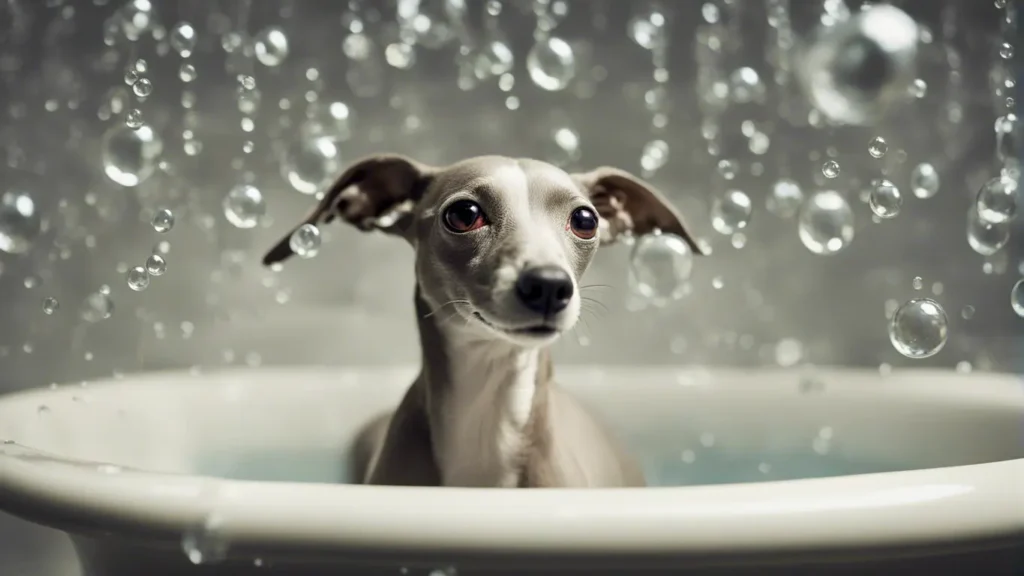
While Italian Greyhounds produce fewer allergens naturally, being conscious of environmental factors allows you to minimize potential triggers. Keeping them freshly bathed, brushing gently with natural brushes, avoiding irritants, and watching for food reactions help reduce allergy risks.
Unique Traits of the Italian Greyhound Coat
Now that you understand their low-allergy potential let’s explore the unique properties of the Italian Greyhound’s coat that make them a good choice for allergy sufferers.
Short-Haired
With a sleek, short, single coat no longer than one inch, the Italian Greyhound has minimal hair to shed or circulate dander and allergens. Their smooth coat lies flat against their body, unlike long, wiry coats that catch and trap allergens.
Minimally Oily
Italian Greyhounds produce remarkably little skin oil compared to other breeds. With less oily residue in their coat, there is less for allergens to stick to and build up on the skin.
Sheds Seasonally
While shedding is minimal year-round, Italian Greyhounds blow their coats only once or twice yearly during seasonal changes. This means less dander release than heavy shedders.
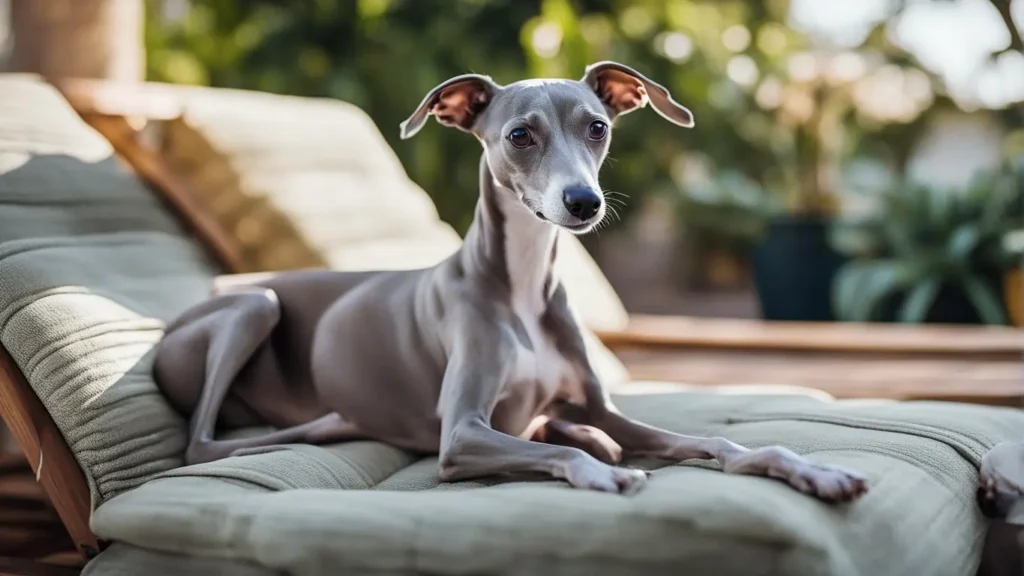
Infrequent Odor
Thanks to producing little oil in their skin and coat, Italian Greyhounds lack that characteristic “doggy smell” from moisture and bacteria accumulation. With little odor, fewer allergens are released.
Self-Cleaning
Like cats, Italian Greyhounds constantly lick and clean themselves with their saliva. This distributes skin oils evenly and allows their coat to release dirt efficiently. With frequent self-grooming, fewer allergens cling to their hair.
All these coat qualities mean less irritation for allergy sufferers. The next time you pet an Italian Greyhound, note how sleek and smooth its short coat feels compared to fluffier or oilier breeds. This streamlined covering is the key to their hypoallergenic status.
Grooming Needs for Allergy Sufferers
Proper grooming of your Italian Greyhound is essential to maintain its low-allergy coat qualities. Here are some tips for grooming routines that minimize dander and allergens:
- Brush using a natural bristle brush once weekly to remove dead hairs before they shed. Avoid metal combs or brushes.
- Bathe every 2-4 weeks using a hypoallergenic shampoo to prevent skin irritation. Rinse thoroughly.
- Avoid heavy conditioners and oily coat products that attract allergens.
- Trim nails regularly to avoid skin scratches that can lead to infections.
- Clean ears weekly using a gentle, vet-approved cleanser to prevent infections that increase allergy risks.
- Monitor their skin for dry patches, rashes, or signs of allergy flare-ups. Report any abnormalities to your vet.

With diligent grooming, you can help minimize allergens lingering on your Italian Greyhound’s skin, coat, and in your home. Be sure to stick to your schedule and use only products formulated for sensitive skin.
Creating an Allergy-Friendly Home Environment
In addition to diligent grooming, creating an allergy-friendly home is crucial for owners of Italian Greyhounds. Use these tips to reduce allergens throughout your living space:
- Use HEPA filters in your central air and vacuum systems to remove allergens.
- Wash all bedding, linens, crates, and toys weekly in hot water to kill dust mites.
- Clean surfaces like floors, furniture, and countertops frequently using allergen-reducing cleaning products.
- Bathe your Italian Greyhound after periods outdoors to remove pollen and other environmental allergens from their coat.
- Limit allowing your dog on upholstered furniture, beds, and carpets that harbor allergens.
- Use non-toxic air cleaners containing activated carbon filters to remove allergens.
- Store food in air-tight containers, and wash food bowls after each meal.
- Avoid using perfumes, air fresheners, or scented cleaning products, which can irritate allergies.
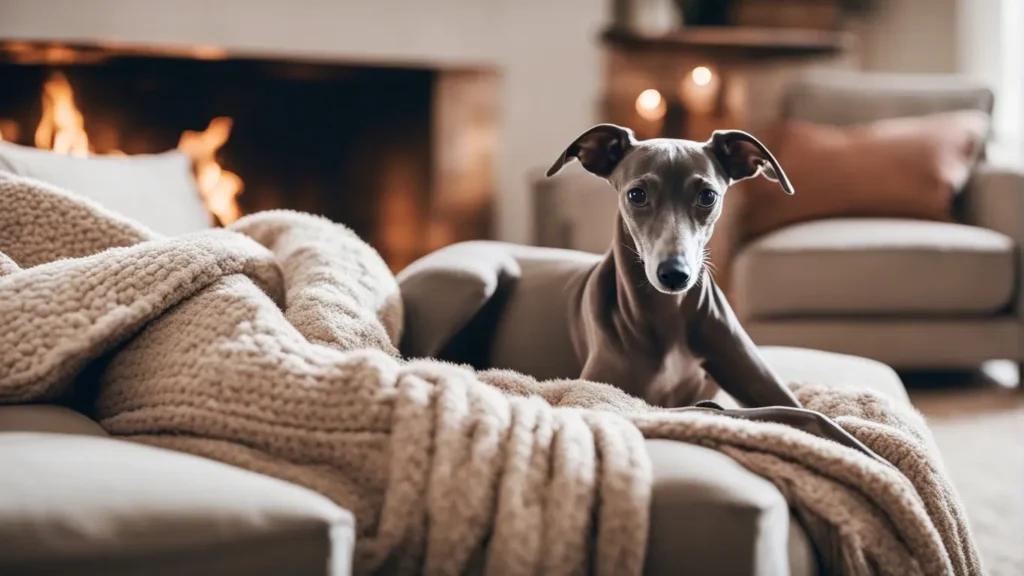
With diligence and consistency in maintaining an allergy-friendly home, you and your Italian Greyhound can breathe easy. Consult your allergist for additional tips to accommodate your specific sensitivities.
Choosing an Italian Greyhound Breeder or Rescue
If, after considering all factors, the Italian Greyhound seems a good hypoallergenic match, it’s vital to find the right source. Both breeders and rescues can offer healthy dogs, but do your homework to find an ethical, conscientious organization.
Quality breeders will:
- Specialize in Italian Greyhounds with deep knowledge of the breed.
- Perform health testing of parent dogs for congenital issues like thyroid disorders.
- Provide health clearances and vet records for every puppy.
- AKC registers all litters and acts as a breed mentor for life.
- Require spay/neuter contracts to take puppies back if ever needed.
- Welcome visits to meet parent dogs and see nursery conditions.
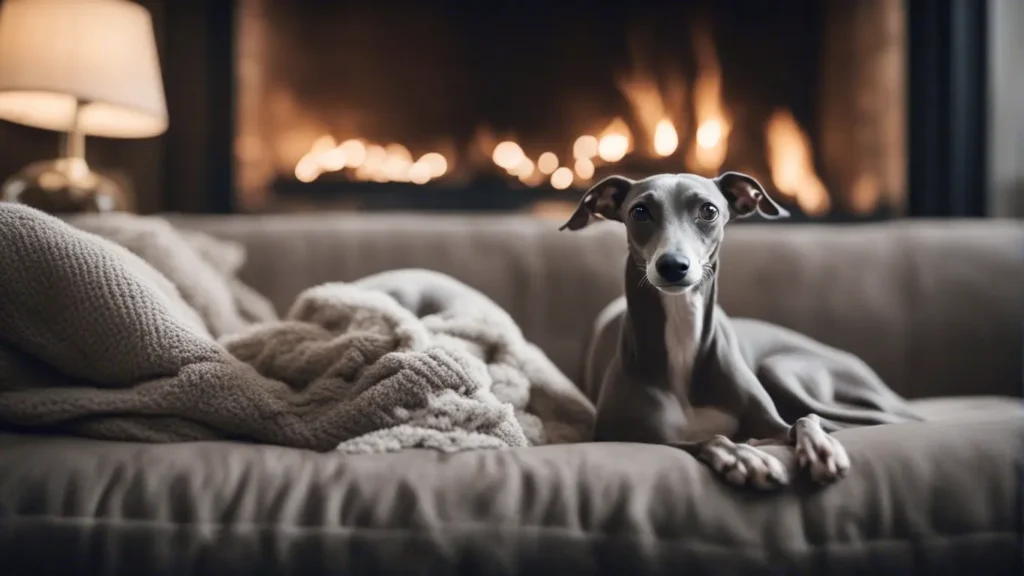
Meanwhile, Italian greyhound-specific rescues offer mature dogs in need of new homes:
- Rescued from shelters, owner surrenders, or puppy mills.
- Often vetted with vaccines, heartworm testing, and treatment for medical issues.
- Screened for temperament and personality traits.
- Placed in foster homes temporarily to determine needs.
- Committed to the breed, match you with the right dog for your home.
Research breeders and rescues to find an ethical partner committed to your new dog’s health and well-being. Avoid pet stores or online sellers that can’t provide in-depth knowledge of their breeding practices or the dog’s background.
Bringing Home Your Italian Greyhound
Once you’ve found a healthy Italian Greyhound from a reputable source, it’s time to prepare for their transition into your home. Use this checklist to create a smooth homecoming:
- Puppy-proof your home by removing hazardous objects, securing chemicals, and covering electrical cords.
- Designate a confinement space like a crate or exercise pen to prevent unsupervised accidents.
- Stock up on necessities like food, bowls, collars, leash, bedding, and toys. Select hypoallergenic products when possible.
- Find a trusted veterinarian to schedule a first check-up for your new dog.
- Gradually introduce your Italian Greyhound to any resident pets to allow safe acclimation.
- Establish a predictable daily routine, including feeding times, walks, playtime, and training sessions.
- Socialize your Italian Greyhound slowly with new sights, sounds, people, and experiences.
- Puppy-proof outdoor areas and supervise time outdoors until fully vaccinated.
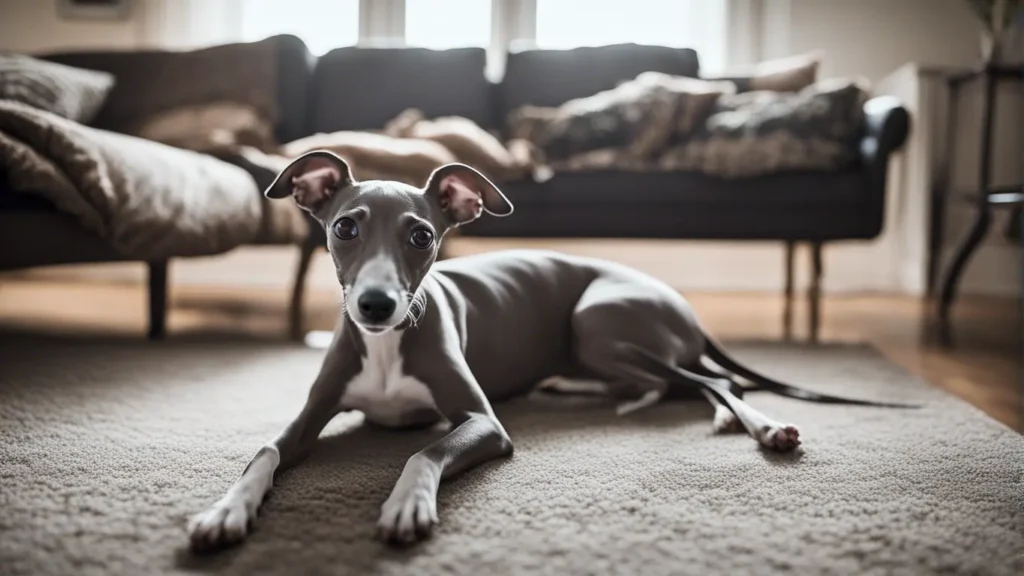
With preparation and diligence in introducing your Italian Greyhound to its new home, you’ll set yourselves up for success in sharing your life with this unique breed.
Caring for an Italian Greyhound’s Overall Health
Like any dog, Italian Greyhounds require attentive health care and preventative maintenance for optimal well-being. Be diligent about:
- Annual vet exams with bloodwork to catch issues early.
- Monthly heartworm, flea, and tick prevention medications.
- Vaccinations like rabies, parvo, and distemper, according to your vet’s schedule.
- Dental care, including annual cleanings and teeth brushing.
- Monitoring weight feeding high-quality diet appropriate for their age and activity level.
- Daily exercise through leash walks free running in secure areas. Avoid overexertion.
- Mental stimulation through training, toys, and fun activities to prevent boredom.
- Pet insurance to assist with costly vet bills for accidents or illness.
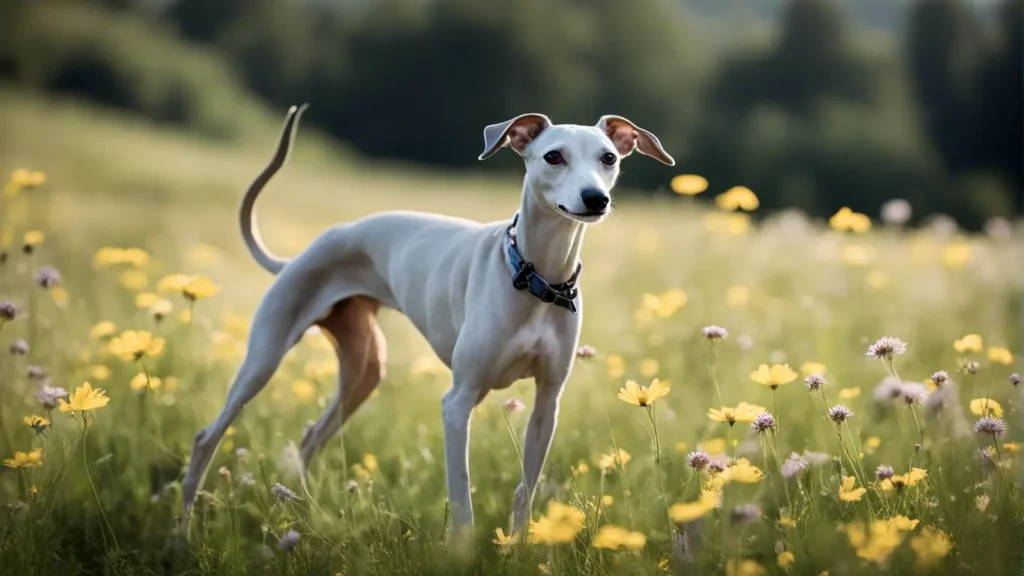
With attentive everyday care and stellar veterinary partnerships, your Italian Greyhound can lead a long, healthy, happy life as your hypoallergenic companion.
Dealing with Allergy flare-ups
Even in a hypoallergenic dog like an Italian Greyhound, occasional allergy flare-ups may occur. Usually triggered by environmental factors, allergy symptoms can range from mild to severe. Stay alert for signs like:
- Increased respiratory symptoms like coughing, sneezing or wheezing
- Runny eyes, nose, or increased mucus
- Digestive issues like vomiting or diarrhea
- Ear infections, skin irritations, rashes, or hair loss
- Behavior changes like lethargy or agitation
If you notice allergy symptoms:
- Give your dog a thorough bath to remove allergens from the skin and coat.
- Wash and replace bedding to eliminate dust mites or dander.
- Use a portable air purifier and vacuum diligently.
- Consult your vet about using allergy-relieving wipes or supplements.
- Make a vet appointment if severe symptoms persist beyond a few days.
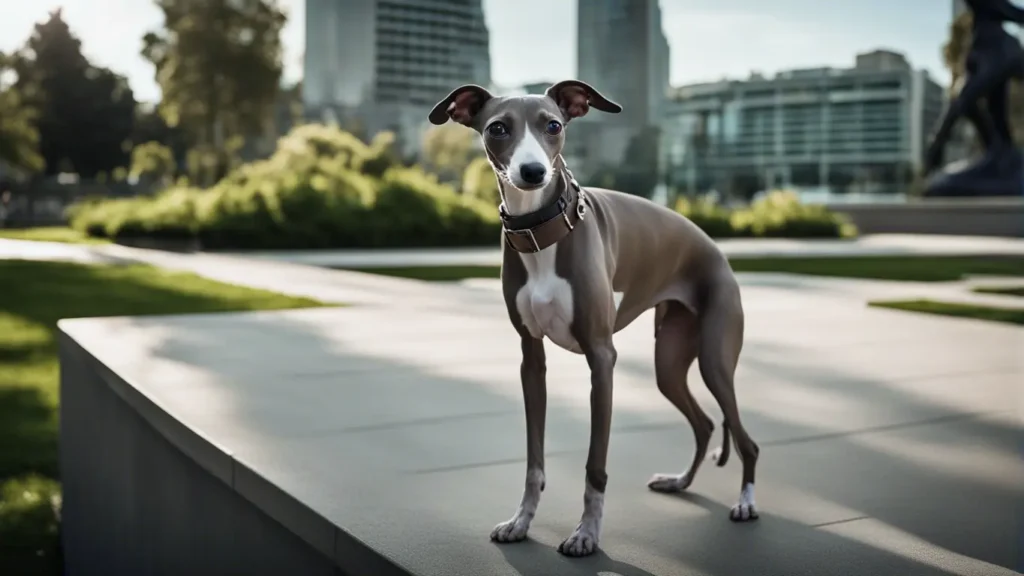
While inconvenient, occasional allergy flare-ups are expected and manageable. With proactive care and open communication with your vet, you can get symptoms under control quickly and comfortably.
Considering Other “Low Allergen” Dog Breeds
While Italian Greyhounds make wonderful hypoallergenic companions, they aren’t for everyone. Consider energy level, exercise needs, grooming requirements, and temperament before deciding if they are the ideal fit.
If you require an alternative better suited to your lifestyle, explore these other breeds considered lower-allergen:
Low Shedding Dogs
- Miniature Schnauzer
- Yorkshire Terrier
- Maltese
- Lagotto Romagnolo
- Chinese Crested
Odorless Breeds
- Greyhounds
- Whippets
- Basenjis
- Afghan Hounds
Hair vs. Coated Dogs
- Bichon Frise
- Portuguese Water Dog
- Soft-Coated Wheaten Terrier
- Irish Water Spaniel
- Poodle
There are many lower-allergen breeds to consider that may align better with your needs. Work closely with your medical and veterinary team to determine the optimal hypoallergenic match.
The Joys of Italian Greyhound Companionship
An Italian Greyhound can be a wonderfully rewarding companion for the right owner willing to provide attentive care to their health and grooming needs. Their sophisticated temperament, lively athleticism, and compact size suit many lifestyles.
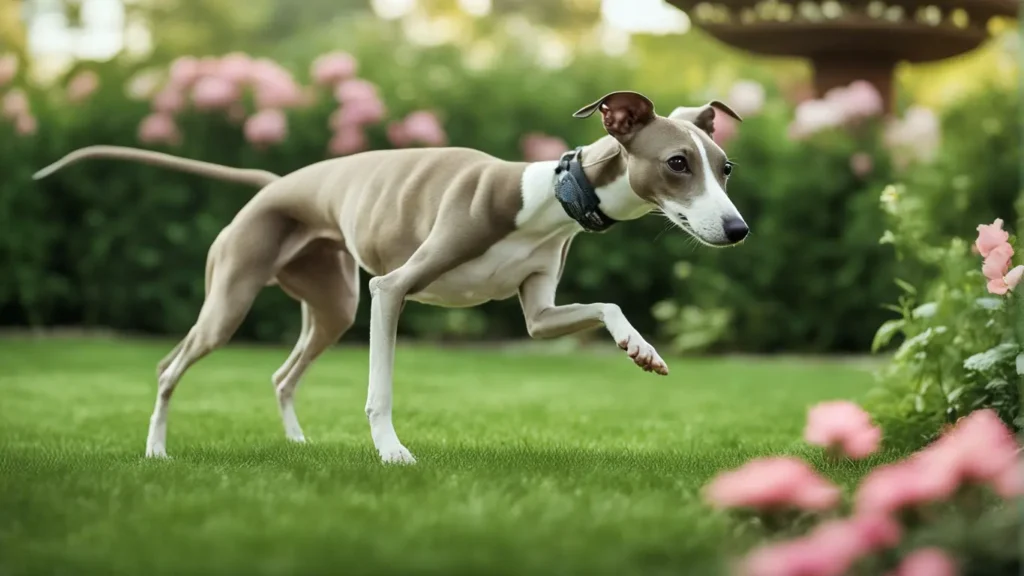
While their potential hypoallergenic traits attract many owners, their devoted and sensitive spirit captures hearts. Once you earn an Italian Greyhound’s affection, they will reward you with unwavering loyalty and add joyful companionship to your days.
So, for those allergy sufferers yearning for a faithful furry friend, don’t despair. This elegant sighthound could allow you to finally indulge in all the delights of dog ownership you’ve been missing. Do your homework selecting a healthy, well-bred Italian Greyhound or rescue dog, then prepare for a lifetime of snuggle-filled, sneeze-free adventures together!